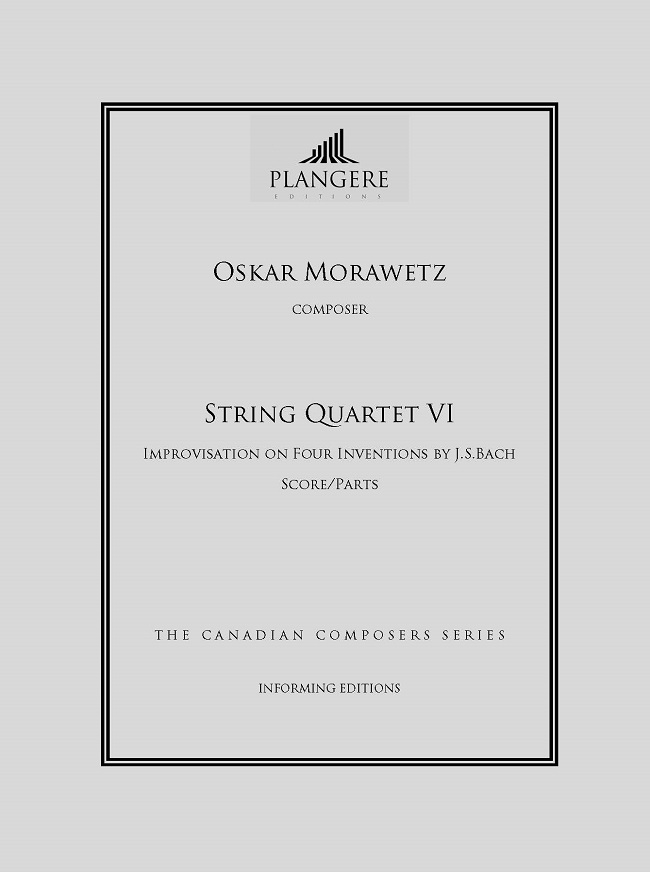Description
Oskar Morawetz
Improvisation
on Four Inventions
by J.S. Bach
In 1992 when the new Toronto CBC building was completed, the radio performance studio was named the Glenn Gould studio, in honour of the pianist who was fascinated by the possibilities afforded by radio, tape and the recording studio. The CBC commissioned three “musical vignettes” for string quartet to be presented at one of a series of inauguration concerts of the new studio. Glenn Gould had recorded music by all three of the commissioned composers for a CBS recording entitled Canadian Music in the 20th Century, to mark the Canadian Centennial in 1967. The works were Oskar Morawetz’ Fantasy in D minor, Istvan Anhalt’s Fantasia for Piano and Jacques Hétu’s Variations for Piano. These three composers were commissioned to write a work for string quartet that bore some relation to Gould’s life and art.
As Morawetz had known Glenn Gould for over 37 years (since the pianist was a little over 13 years old), he explained:
“I was very well acquainted during our many conversations and meetings about his musical tastes and the reasons why he adored some composers and violently disliked others. Though he changed his views many times during all these years, one thing which remained always unchanged was his admiration for Bach and equal fascination for works by some of the late romantics which included Wagner’s “Tristan”, Strauss’ “Electra” and Schoenberg’s “Transfigured Night”. With this in mind I decided to compose a work based on four inventions by Bach clothed in the harmonic language of Gould’s favourite romantic composers.”
Improvisation on Four Inventions by J.S. Bach is harmonically based on the music of Wagner, Richard Strauss and Schoenberg. The work starts with three varied statements of the somber and highly chromatic Three-part Invention in f minor (No. 9). This is followed by fragments of the lively and Two-part Invention in F (No.8) and by a statement of the gigue-like Two-part Invention in d minor (No.4). The movement progresses with these three inventions in dialogue and in combination. The protracted entry of the Two-part Invention in E (No.5) crowns the first structural climax of the movement. The four themes are further developed and combined. A return of the initiating Invention in f minor acts as the beginning to the end and the work concludes peacefully and quietly.


Reviews
There are no reviews yet.